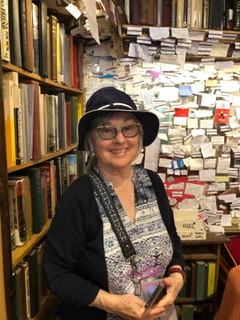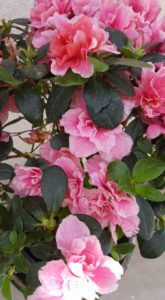
How Seasons and Nature Affect the Way Authors Write
Take a few moments to consider how seasons and nature affect the way authors write. Allow the beauty of different seasons and nature to inspire you whether you are a seasoned writer or new writer. Incorporate your observation of the changes in nature of the four seasons into your writing.
Write down how the seasonal differences affect your five senses, and include your observations into a new story idea. When you come up with a good idea, save it in a folder so you don’t forget it.
Seasons and Nature Journal
Keep an ongoing weather and seasons journal. What do you notice during the weather change, seasons of the year, and seasons of life? Weather changes trigger certain emotions like a rainy day makes you want to curl up in a comfy chair with a book.
The winter season often brings on the excitement of the holidays but can also cause feelings of melancholy if an individual doesn’t have family. Of course, seasonal activities increase when summer season arrives as school is out and families go on vacations. When you are inspired with a new idea from these seasonal observations you’ve written down, weave it into a story setting.
For example, you may have noticed while following my Elizabeth Pye’s Facebook page how nature and the four seasons inspire my writing life. I’ve listed examples below of how changes in seasons and weather have motivated me in the creative process of a new writing project.
List of nature and seasonal examples:

- “Sometimes I have to take a break and enjoy nature before I start a new scene. BTW, I’m about to start on chapter 20 of Mon Amour, Friend or Foe.”
- “Signs of autumn: shorter days, cooler nights, and golden leaves. How come the forecast is for a 100-degree weekend?”
- September 24th – “A beautiful sky like this one energizes me…better get to work on that new scene.”
- October 21st – “My head is in the clouds as I move to chapter 22 of my work in progress, Mon Amour, Friend or Foe. The creative process never fails to thrill me!”
- March 16th, azaleas: “I’m back on track with my writing. Some days I am ahead of others…just like the azaleas.”
Use the Five Senses
Notice how you are affected by seasons of the year, and use the five senses while describing your feelings in your writing. For example, the spring equinox in the Northern Hemisphere is a favorite season of mine because of warm weather and my love of flowers. However, there is also beauty in nature during the cold weather months.
Winter solstice can affect a person’s mood because of longer nights and less hours of daylight. But the length of the day doesn’t have to set you back with your writing. Summer solstice, on the other hand, creates anticipation of longer hours of daylight to enjoy.
Notice how your mood changes as the weather changes during seasonal shifts, and record your moods into the nature and season journal.
Capture moods while writing in different seasons.
The five senses will help you capture moods in such descriptive writing so that a picture is formed into the reader’s mind. Look at these next examples incorporated into the first book of the French Connection series:
- “She didn’t weaken until coming to the flower stalls. The fragrance and fresh beauty of the red carnations enchanted her.” – Silk or Sugar.
- “Janine clutched her blue wool shawl around her…seeking to lessen the effect of an unseasonably cold north wind.” – Silk or Sugar
Check out this Halloween costume inspired during one of my
festive fall writing seasons, on Elizabeth Pye’s Facebook page.
Different Locations
Your writing can especially benefit from different locations when you travel. In my opinion, traveling to the place of my historical romance novel setting has tremendously enabled a more realistic feel to the story.
However, there are different ways to accomplish sense of place. You may find a better way is watching YouTube videos of your setting’s vicinity.
Visit the places that you intend to write about.
Make this part of the process of writing exciting and visit the places that you intend to write about. Travel to Alaska in the winter months and truly experience a snowy north pole setting and Northern Lights sky.
Perhaps you’d prefer to go south of the United States and see Aurora Australis. It’s the southern hemisphere counterpart to Aurora Borealis (Northern Lights).
Or visit a desert in Southern California in the summer, a good time to go if you want to feel true desert heat. If you happen to be there on the hottest day of the year, you’ll not soon forget its stifling heat. Experiencing a heat wave during that time of year would be unforgettable I can assure you.
Writing Season
A writer’s best writing season will vary, so there is not a set best time to write for all authors. Of course, it’s good to write something nearly every day. But if you go a long time without writing on your project, don’t be down on yourself.
One author could write his or her best while at a family farm for annual summer family retreats. However, another writer could write a detective story best seller during a cold New York December.
The best writing season for every writer is every day of the year. Write something.
How to order The French Connection books on Amazon
Order Silk or Sugar (Book 1) by clicking here.
Order Return to Chateau Fleury (Book 2) by clicking here.
Mon Amour, Friend or Foe (Book 3): order here.
Interested in learning how to write historical fiction?
Check out Elizabeth’s interview on writing historical fiction.

